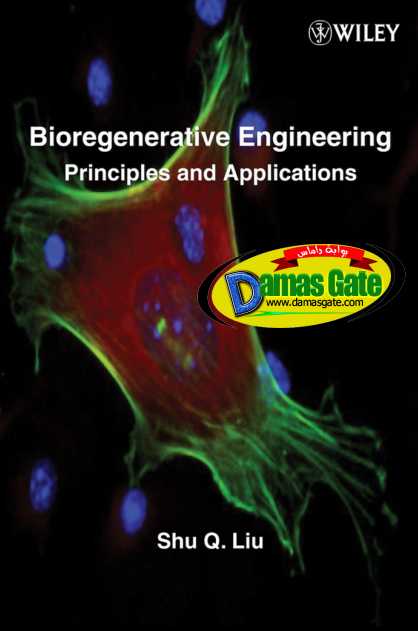Bioregenerative Engineering Principles and Applications - Shu Q. Liu

PREFACE
Nature has created numerous elegant living systems, including the human, based on the hierarchical functional units—molecule, cell, tissue, and organ. A living system develops through a long evolutionary process, during which the system undergoes genotypic and phenotypic changes in response to environmental simuli. Whereas the environmental and genetic factors play critical roles in evolutionary development, they may induce disorders and injuries of the cell, tissue, or organ, resulting in impairment or destruction of the functional units and preventing the living system from functioning and survival. Since these disorders and injuries are inevitable events during the evolutionary process, Nature has designed various mechanisms for the repair or replacement of injured and disordered cells, tissues, or organs, leading to partial or complete restoration of the structure and function of the living system. Among these mechanisms is cell, tissue, and organ regeneration.
Regeneration is a natural process by which a mature living system repairs or replaces its lost cells, tissues, and organs by activating specifi c renewal mechanisms, resulting in the restoration of the structure and function of the system. The application of regeneration principles to the treatment of human disease is known as regenerative medicine. During the past decade (since the mid-1990s), extensive investigations have been conducted to elucidate the mechanisms of regeneration, leading to the development of regenerative technologies such as stem cell identifi cation, expansion, and transplantation. It is hoped that the transplanted stem cells can engraft to target tissues or organs, differentiate to specifi ed cell types, replace malfunctioned or lost cells, and thus restore the natural structure and function of involved tissues and organs.
Preliminary investigations have demonstrated the potential of stem cell transplantation for
the treatment of degenerative disorders and cell injury in experimental tests and clinical trials.
However, a simple transplantation of stem cells may not solve all the problems in regenerative
medicine, since the selected stem cells may not be designed for the therapy of a specifi ed target
tissue or may not be able to differentiate into the desired cell types in an environment that is not
established for the stem cells. Thus, fundamental issues in regenerative medicine are how to induce stem cells to differentiate into specifi ed functional cell types under given environmental conditions and how to integrate the stem cell-derived cells into the natural system.
Download
*

PREFACE
Nature has created numerous elegant living systems, including the human, based on the hierarchical functional units—molecule, cell, tissue, and organ. A living system develops through a long evolutionary process, during which the system undergoes genotypic and phenotypic changes in response to environmental simuli. Whereas the environmental and genetic factors play critical roles in evolutionary development, they may induce disorders and injuries of the cell, tissue, or organ, resulting in impairment or destruction of the functional units and preventing the living system from functioning and survival. Since these disorders and injuries are inevitable events during the evolutionary process, Nature has designed various mechanisms for the repair or replacement of injured and disordered cells, tissues, or organs, leading to partial or complete restoration of the structure and function of the living system. Among these mechanisms is cell, tissue, and organ regeneration.
Regeneration is a natural process by which a mature living system repairs or replaces its lost cells, tissues, and organs by activating specifi c renewal mechanisms, resulting in the restoration of the structure and function of the system. The application of regeneration principles to the treatment of human disease is known as regenerative medicine. During the past decade (since the mid-1990s), extensive investigations have been conducted to elucidate the mechanisms of regeneration, leading to the development of regenerative technologies such as stem cell identifi cation, expansion, and transplantation. It is hoped that the transplanted stem cells can engraft to target tissues or organs, differentiate to specifi ed cell types, replace malfunctioned or lost cells, and thus restore the natural structure and function of involved tissues and organs.
Preliminary investigations have demonstrated the potential of stem cell transplantation for
the treatment of degenerative disorders and cell injury in experimental tests and clinical trials.
However, a simple transplantation of stem cells may not solve all the problems in regenerative
medicine, since the selected stem cells may not be designed for the therapy of a specifi ed target
tissue or may not be able to differentiate into the desired cell types in an environment that is not
established for the stem cells. Thus, fundamental issues in regenerative medicine are how to induce stem cells to differentiate into specifi ed functional cell types under given environmental conditions and how to integrate the stem cell-derived cells into the natural system.
Download
*